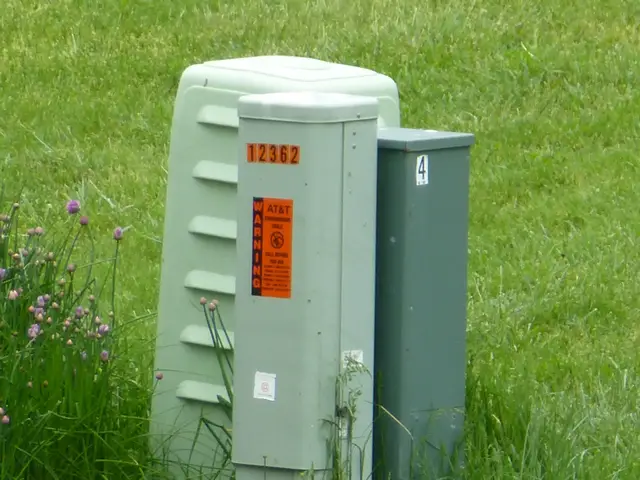


Review: Panasonic Lumix ZS15 12.1 MP 16x Digital Camera Vs. Canon SX230 HS

From left, the Panasonic ZS-15, Canon SX230, Sony HX5V, and a Panasonic ZR-3. There isn't a huge difference in envelope dimensions. Only the older ZR-3 is significantly slimmer.

From the back, the thin profile of the ZR-3 is easily discernible. Between the two primary subject cameras discussed here, the new ZS-15 and the SX230, there isn't enough difference to worry about.
Recently, I reviewed a battery of compact point and shoot genre digital cameras suitable for hunting and the outdoors. The losers were the Nikon S9100 for poor build quality, very poor video, and sounding like a tractor when you operate the zoom. Not a healthy tractor at that. The Sony HX7V exhibited truly sea-slug slow shooting performance. The middle of the road was taken up by a previous Sony model, the Sony HX5V, while connecting to a PC with a truly wacky proprietary Sony adapter, often takes very good pictures, is well-built, but is still noticeably slow compared to several Canon and Panasonic models. The winners were the Canon SX230 overall (easily) with an honorable mention to the older Panasonic DMC-ZR3 for its slimness, responsiveness, very low price, and excellent battery life . . . noting that the more current, but similarly performing Panasonic DMC-FH25K model was quite a bargain at its $140 street price or even a tad less.

The Canon Powershot SX230, with its 14x optical zoom range, has produced some very good images for me. There are situations where the 14x zoom just isn't enough, like the above image of turkeys shot from the far side of a clover field. For extended zoom range without additional bulk or great cost, the new Panasonic ZS-15 has the potential to fill the bill.
Now, most of the 2012 models are out and as usual, there is a mix of hits and disappointments in what is called the travel zoom category, generally compact point and shoot cameras with 10x or better zoom ranges, often including a GPS. Already, a few of the newer models can be safely deemed a step backward. Inexplicably, the Nikon 9300 adds a GPS to last year's 9100 and along with that dubious feature adds an even more dubious 16 megapixel sensor. Currently, it is way overpriced at its $345 street price and wouldn't be competitive even if it was a hundred dollars or so less as far as I'm concerned.
Last year's Sony DSC-HX9V has been replaced by the DSC-HX10V, cramming 18 megapixels onto its tiny sensor resulting in a loss in image quality along the way. Still selling near its retail price of $329.99, it doesn't compare favorably to Canon and Panasonic product. The new Canon SX260 stretches the optical zoom of the SX230 from 14x out to 20x, it runs $300 as of this writing, and it also adds a plethora of new scene modes. It is easy to recommend the SX260 as it yields essentially the same performance as the SX230 with the same sensor. It is an incremental improvement, though, and if the 14x zoom of the SX230 is enough for you the remaining SX230's are a bargain at about $199 street price.
You might be wondering when I'm going to get to the Panasonic ZS15, so am I, but I'll get there. Though Panasonic has generally been credited with pioneering this branch of digital camera, their 2011 offerings fell flat. The DMC-ZS10 was described as doing everything right except take good pictures by one reviewer, Jeff Keller, which about sums it up. The 2012 flagship Panasonic super-zoom, the DMC-ZS20, gets Panasonic back in the game with a 20x zoom, a comparatively full-featured GPS, currently offered at the equally full-featured price of $325 or so. While I debated, I decided it wasn't worth reviewing the ZS-20 compared to this Lumix ZS15, a comparative screaming deal at $230 street.
What you give up in saving a hundred dollars is what I find of little value: the GPS, the longer zoom (16x is generous enough), and stereo video recording. If anything, the ZS15 nets you slightly better image quality, better battery life (no GPS or touch screen) and you lose little else. There is no particular reason to avoid the 20x ZS20, but the more fiscally conservative folks will say that the so-called “downgraded” ZS15 is no downgrade at all for hunting and outdoor use.
The ZS15 uses the new sensor from the Panasonic FZ-150 (a very good thing) coupled with the lens and body from the ZS-10 (not a bad thing). The sensor obviously boosts image quality, the precise area where the ZS-10 stumbled. Specifically, the GPS-equipped ZS20 has a 1/2.33" (6.08 x 4.56 mm) sensor, while the ZS15 has the 1/2.3" (6.17 x 4.55 mm) - from the FZ150.
It has been often said that Panasonic has the best artificial intelligence algorithms in the point and shoot camera segment. Their iA (intelligent auto) mode is industry leading, in my opinion. It is as close to “set it and forget it” as can be found. The Lumix ZS15 uses a higher resolution LCD screen (460,000 pixels) compared to its earlier and cheaper models, keeping pace with the Canon, and forgoes the sometimes annoying pop-up flash in favor of an integral camera body flash, an approach I prefer for general outdoor work particularly. Sony has long had the “sweep panorama” mode, still ignored by Canon, but finally added here by Panasonic. The battery life of 260 pictures (CIPA Standard) is not shockingly good, but is above average and no GPS or touch screen drain is present. Markedly better than the Nikon 9300 (200 shots) a bit better than the Canon SX230 / SX260 (230 shots), but not close to the Sony HSX-10V (340 shots). Note, however, that the Canon / Nikon / Sony numbers are all estimated with their GPS units turned off. One other useful mode, the High Dynamic Range mode, is added and it is surprisingly effective in difficult lighting conditions.
According to Panasonic, “the Intelligent Zoom is an extensive zoom function using digital zoom, however, you can even draw the subject 2x closer than the original optical zoom with minimum deterioration of image quality thanks to the Intelligent Resolution technology. This means the 16x optical can virtually extend to 32x equivalent.” 16x zoom is a goodly amount of zoom as is, a notch better than the 14x Canon SX230. While I'm hesitant to call it as good as true optical zoom, it appears surprising close and in the rare instances where you really need 32x for a still, you've got the shot. It does extend the versatility of the camera.
At 4.13 x 2.27 x 1.31 inch, the envelope dimensions of this camera are slightly more compact than many and the .46 lb. weight with battery and memory card is also appealing. On the negative side, ostensibly to save money, Panasonic has gone to in-camera battery charging which not only puts the camera out of commission but is unbearably slow compared to wall chargers. Consider the addition of an optional wall charger an absolute must, along with an extra battery. Those planning extensive video capture should consider an extra battery or two mandatory. As the temperature outside drops, so does battery life along with it.
I am hesitant to put prices into a digital camera review, as they can change drastically overnight. By the time the holiday shopping season rolls around, you'll likely see some impressive deals based not on camera quality or performance, but just what is left in inventory that needs to be moved to make way for the next year's wonderments. It can be worth waiting for, if you are on a budget. The bad news is that the most popular models may get sold out and don't make it over to the price cutting stage. If the 20x zoom and GPS holds great appeal for you, you may well want the ZS-20 for the extra c-note. Same situation with Canon, the extra zoom, extra scene modes, and handling features might be worth the hundred dollar upcharge for the SX260 vs. the SX230. It isn't for me, but that is why they call them choices. So, I'll compare last year's winner, the Canon SX230, directly to this Panasonic ZS-15 which should help make the differences a bit more clear.
Battery life: Panasonic wins.
Battery charging: Canon wins with a speedy external charger.
Zoom Range: Panasonic wins.
Size / Weight: Advantage to Panasonic, but by the smallest of margins. No practical advantage either way.
LCD screen: The Canon's 16:9 screen is better for video than 4:3 stills, the reverse is true in the case of the Panasonic.
Video features: Canon has high speed video modes for lower-resolution slow-motion video. Canon also has stereo sound, but the stereo separation on pocket mega-zooms is not distinct. Panasonic lacks these features, but does have a 30 fps HD video vs. the 24 fps HD of the Canon.
Sensor: Sensor size is essentially the same, the dinky 1/2.3 inch common to many compacts. Both are about 12MP effective resolution.
To test the intelligent zoom, I shot representative pictures of my utility box on a windy, rainy day from a laser-verified 43 yards. The pictures were taken at the 5M mode (2560 x 1920) and resized with no cropping to 640 x 480 for web use. First, the Panasonic ZS-15 that yields an indicated, astounding, 37.9x zoom.

The same was done with closest Canon mode (2816 x 2112) also resized with no cropping to 640 x 480.

Both shots were made hand held in the wind. The more I experimented with the ZS-15 the more it became apparent that the intelligent zoom is no gimmick, but an immensely useable feature. For close images with perfect lighting conditions, many compact digital cameras do a fine job for snapshots. For typical portraits and family events, speed isn't always important, and you can often get as close as you need to be. Slow focus, slow shot to shot times and overall sluggish performance has been the stopper for several otherwise enjoyable cameras, particularly several Sony models. Last year's Canon SX230 was a substantial improvement. This year's ZS-15 from Panasonic addresses the weak link of previous Panasonic compact long-zooms, that being poor image quality. In doing so, it has not just closed the gap with Canon and Sony travel zoom cameras, it has leapt ahead by a good margin.

Again handheld at 37.9x "intelligent zoom," this unsuspecting robin was snapped from across my front lawn with the ZS-15. The image, despite being handheld, is surprising sharp considering the aggressive zoom. Without any cropping or retouching, it was resized to 800 x 600 for this web page.

One of the promised technologies incorporated in the Lumix ZS-15 is the "shoots through glass" mode. Here, shot through my front window, a squirrel comes out to enjoy an after rain-shower snack.
As you might be guessing by now, the just-released Panasonic Lumix ZS-15 exceeded the performance of the already excellent SX230 handily, with far greater capabilities and noticeably faster operation. There isn't much to find fault with, but I'll try. The turtle-slow USB charging is a step backward and “genuine” Panasonic branded batteries are overpriced. You can solve both issues by picking up a Wasabi Power charger and twin pack of batteries that are rated at 1200 milliamps, compared to the OEM 895mAh for 27 dollars, which is exactly what I did. The supplied Panasonic software is both “wizard-crazy” and forgettable. The full manual is on CD, and like most I'd prefer a bound copy. These issues are only niggles at best.

Above, cranked past 30x the ZS-15 captured this image of Mother Goose and two of her very recently hatched goslings from across the pond. Most travel zooms just can't do this. The original image was resized to 640 x 480 for the web, but not cropped, altered, or otherwise adjusted.
For
a fast-operating, long zoom camera that is easy to slip into a pocket
and has the ability to take shots you never thought you'd get, effortlessly,
with a wondrous artificial intelligence mode, the ZS-15 can only be described
as a smoking hot deal at $230 or so. By comparison, most other travel
cams feel underpowered. The 37.9x "intelligent zoom" in 5M mode
produces not just usable images, but gorgeous 8 x 10 prints. It is truly
rare to have a pocketable long-zoom digital camera that just gets it all
right, but this new Lumix ZS-15 is as close as I've ever experienced.
Copyright May, 2012 by Randy Wakeman. All Rights Reserved.
Copyright 2012 by Randy Wakeman. All Rights Reserved.

Custom Search



